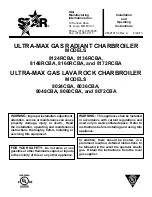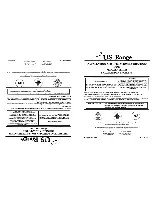
AM Series Boilers and Water Heaters
CHAPTER 6: INSTALL – VENT & COMBUSTION AIR PIPING
Page
60
of
154
AERCO International, Inc.
•
100 Oritani Dr.
•
Blauvelt, NY 10913
OMM-0100_0D
03/28/16
Ph.: 800-526-0288
GF-146
6.5.2 Sealing of PVC, CPVC or ABS
The PVC, CPVC, or ABS should be cleaned and sealed with the pipe manufacturer’s
recommended solvents and standard commercial pipe cement for the material used. The PVC,
CPVC or ABS should use a silicone sealant to ensure a proper seal at the appliance connection
and the air inlet cap connection. ABS should use a screw type clamp to seal the pipe to the
appliance air inlet and the air inlet cap. Proper sealing of the air inlet pipe ensures that
combustion air will be free of contaminants and supplied in proper volume.
When a sidewall or vertical rooftop combustion air supply system is disconnected for any
reason, the air inlet pipe must be resealed to ensure that combustion air will be free of
contaminants and supplied in proper volume.
6.5.3 PVC/CPVC Vent Piping Materials
Installation must comply with local requirements and with the National Fuel Gas Code, ANSI
Z223.1 for U.S. installations or CSA B149.1 for Canadian installations.
For installation in Canada, vent pipe system must be certified to ULC-S636.
Installation of a PVC/CPVC vent system should adhere to the PVC/CPVC vent manufacturer’s
installation instructions supplied with the vent system.
WARNING!
Do not insulate PVC/CPVC exhaust pipes nor install into an
enclosure, closet, alcove or any other obstruction thereby
preventing the cooling of the exhaust pipe.
WARNING!
PVC venting is only approved for installations with a difference of
>35 degrees between supply and return temperature, and a return
temperature less than 145°F. For lower
ΔT systems, cPVC,
polypropylene, or stainless steel venting is required. A high
temperature kit will also be required. Contact your manufacturer's
representative for further information.
















































